Using administrative data sources in Labour Market research [pdf 5 ...
Using administrative data sources in Labour Market research [pdf 5 ...
Using administrative data sources in Labour Market research [pdf 5 ...
You also want an ePaper? Increase the reach of your titles
YUMPU automatically turns print PDFs into web optimized ePapers that Google loves.
Sylvia Dixon 27<br />
accurate. The registered unemployment <strong>data</strong> analysed by Gobbi and Rea<br />
conta<strong>in</strong>ed <strong>in</strong>formation on everyone who registered as unemployed <strong>in</strong> the period<br />
1993 to 1997, represent<strong>in</strong>g around 1.2 million <strong>in</strong>dividuals and 2.8 million dist<strong>in</strong>ct<br />
spells of registration. The NZES <strong>data</strong> conta<strong>in</strong> <strong>in</strong>formation on demographic<br />
characteristics such as age, gender, ethnicity, educational atta<strong>in</strong>ment and place of<br />
residence, as well as detailed <strong>in</strong>formation on registration history and employment<br />
assistance received. The <strong>data</strong> analysed by Maré provide complete <strong>in</strong>formation on<br />
all assistance that was provided to registered jobseekers over a n<strong>in</strong>e-year period<br />
(1989–97).<br />
One of the most important properties of <strong>adm<strong>in</strong>istrative</strong> <strong>data</strong>sets is that the<br />
<strong>in</strong>dividuals or firms that <strong>in</strong>teract with the <strong>adm<strong>in</strong>istrative</strong> agency are usually<br />
assigned unique identifiers. Consequently, the records relat<strong>in</strong>g to each unique<br />
respondent can be accurately l<strong>in</strong>ked across time. This enables the creation of<br />
<strong>data</strong>sets that <strong>in</strong>clude time-related and spell variables, such as the duration of time<br />
that jobseekers spend unemployed, or the number of times a firm has been<br />
<strong>in</strong>vestigated by OSH. The longitud<strong>in</strong>al nature of many <strong>adm<strong>in</strong>istrative</strong> <strong>data</strong>sets also<br />
enables <strong>research</strong>ers to apply panel <strong>data</strong> techniques <strong>in</strong> their modell<strong>in</strong>g of outcomes<br />
or policy effects, which can be useful <strong>in</strong> deal<strong>in</strong>g with classic estimation problems<br />
such as unmeasured heterogeneity among programme participants. Maré and<br />
Papps use a range of different fixed effect specifications of their basic statistical<br />
model <strong>in</strong> attempt to estimate the effects of OSH compliance assessments,<br />
education, <strong>in</strong>formation and advice on the <strong>in</strong>cidence of accidents, while controll<strong>in</strong>g<br />
for firm and <strong>in</strong>dustry heterogeneity.<br />
A important disadvantage of <strong>adm<strong>in</strong>istrative</strong> <strong>data</strong> <strong>sources</strong> is that the range of<br />
variables collected on each <strong>in</strong>dividual or firm is often quite limited, h<strong>in</strong>der<strong>in</strong>g the<br />
capacity of the <strong>research</strong>er to explore all relevant hypotheses about the causes of<br />
the relationship or outcome of <strong>in</strong>terest, or control for potentially confound<strong>in</strong>g<br />
factors. For example, the OSH <strong>data</strong> analysed by Maré and Papps conta<strong>in</strong>ed very<br />
little <strong>in</strong>formation on the range of firm characteristics that may be associated with<br />
differences <strong>in</strong> the level of hazards faced by firms, or differences <strong>in</strong> the costs of<br />
prevent<strong>in</strong>g accidents. This central weakness <strong>in</strong> the <strong>data</strong> source limits the weight<br />
that can be attached to the conclusions of their study. A key limitation of the<br />
unemployment register <strong>data</strong> analysed <strong>in</strong> the other two studies is that very little<br />
<strong>in</strong>formation is recorded on the activities and circumstances of those who leave the<br />
register. This means that transitions from unemployment <strong>in</strong>to employment cannot<br />
be properly dist<strong>in</strong>guished from less favourable outcomes, such as exit from the<br />
labour market.<br />
One response to the problem of omitted variables <strong>in</strong> <strong>adm<strong>in</strong>istrative</strong> <strong>data</strong>sets is<br />
to l<strong>in</strong>k them to other <strong>data</strong> <strong>sources</strong>. While the studies <strong>in</strong> this issue of the <strong>Labour</strong><br />
<strong>Market</strong> Bullet<strong>in</strong> do not <strong>in</strong>volve any match<strong>in</strong>g of <strong>data</strong> from different <strong>sources</strong>, other<br />
New Zealand <strong>research</strong>ers are currently engaged <strong>in</strong> <strong>in</strong>novative projects that are<br />
l<strong>in</strong>k<strong>in</strong>g <strong>adm<strong>in</strong>istrative</strong> with survey <strong>data</strong> to <strong>in</strong>vestigate problems that could not



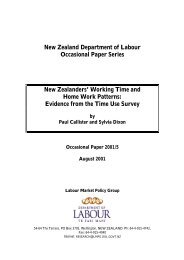

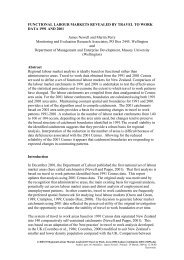
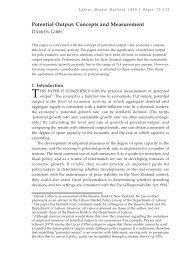

![a note on levels, trends, and some implications [pdf 21 pages, 139KB]](https://img.yumpu.com/27285836/1/184x260/a-note-on-levels-trends-and-some-implications-pdf-21-pages-139kb.jpg?quality=85)


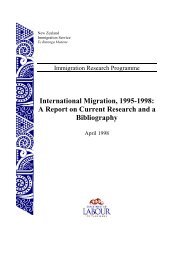

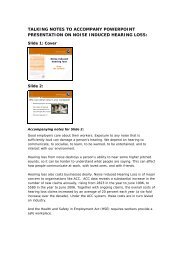
![Labour Market Trends and Outlook - 1996 [pdf 18 pages, 94KB]](https://img.yumpu.com/27285764/1/184x260/labour-market-trends-and-outlook-1996-pdf-18-pages-94kb.jpg?quality=85)

